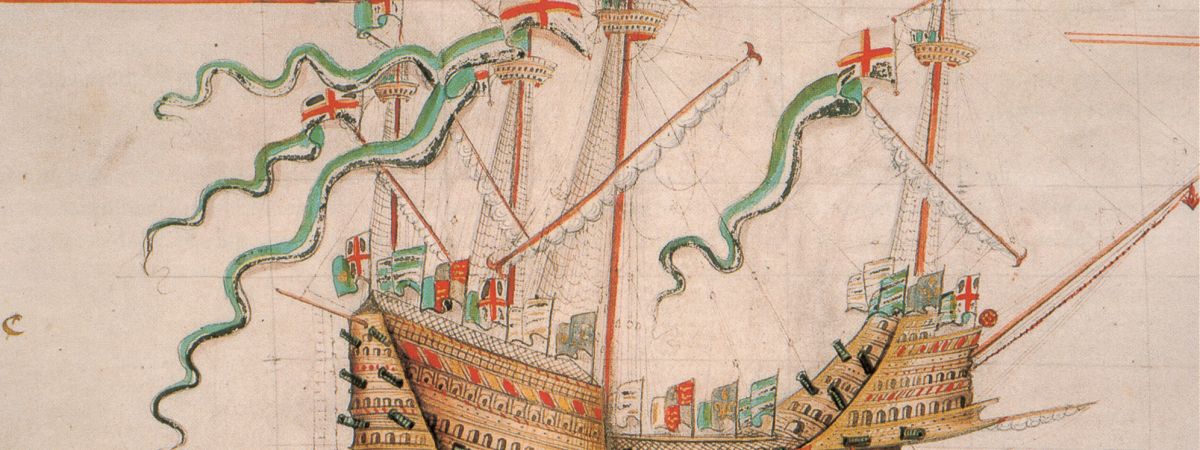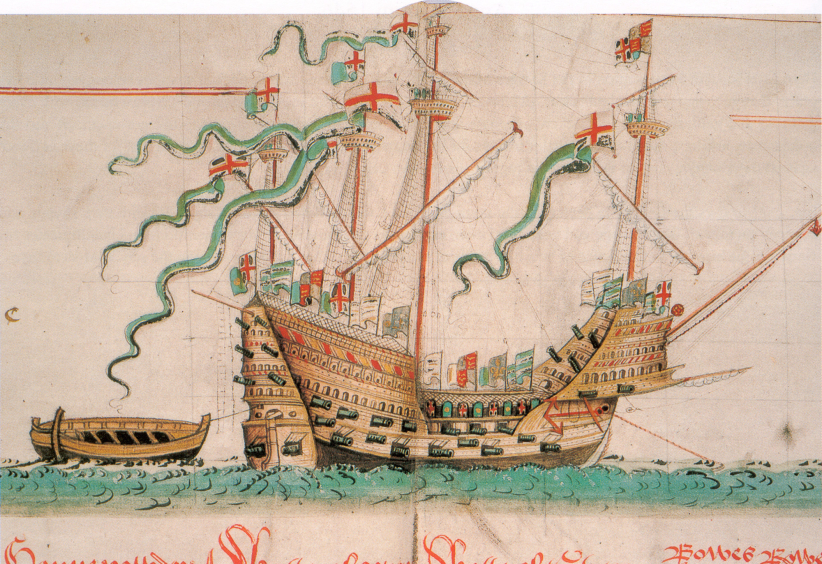Black Tudors: an extraordinary life

Share
Im Louise, the Heritage Engagement Officer at Selly Manor Museum, and this is the second of a series of blogs exploring Black Tudors for Black History Month.
Some of the Black Tudors inspired the exhibition Black Tudors: New narratives and led very exciting lives. One in particular was Jacques Francis.
Jacques Francis was a salvage diver, on amongst others, the Mary Rose King Henry VIIIs favourite ship, which sank on 19th July 1545. Salvage diving was incredibly important to the English economy, as ships were expensive investments which carried valuable merchant goods or military equipment.

Image: Jacques Francis by Nina-Simone Brown
Henry VIII had previously commissioned a large Venetian salvage crew to attempt to lift the valuable ship, but this had resulted in breaking one of the ships masts. After this, recovery of the ship was abandoned, and a salvage diving crew which included Francis, was employed.
Sadly, shipwrecks were common, as was loss of life because most Tudors couldnt swim! To put this into context, the Mary Rose had a crew of over 700, but only 30 of them were rescued.
Swimming was considered unlucky and washing with water could be dangerous. According to Tudor beliefs the body was made up of four fluid humours: bile, yellow bile, phlegm and blood. If the humours were in balance, then the body was in health. Outside agencies such as water could imbalance the body, they were venomous airs causing cold and infection, so Tudors tended to wash only in clean, fresh, cold water, and even then, just their face, hands, and arms. Submerging yourself in a hot bath was something to avoid.
Swimming was also considered pointless because ships were not in the habit of turning around to rescue sailors who fell overboard better to drown quickly!
In contrast to this, Jacque Francis was incredibly at home in water. He was born in the 1520s on an island off the coast of the part of West African known to the Tudors as Guinea. He most likely learned to dive from his parents and friends. He arrived in England before regular, direct trade with Africa began, and was part of a team of divers managed by a Venetian named Peter Paolo Corsi. Francis led the diving team, which also included men named John Iko and George Blacke. Its possible from the names of these men and their swimming and diving skills that they, and the rest of the team were also African.
In May 1547 Jacques Francis testified in court in support of Corsi, who had been accused of stealing items salvaged from another ship in Southampton. This wreck became the subject of a legal dispute and a two-year court case. We do not know whether Franciss testimony was enough to exonerate his employer, as the verdict does not survive.
We know from Franciss testimony that he was a very skilled diver, having mastered the art of free diving requiring no breathing apparatus. Free diving demands years of training from an early age to develop the necessary lung capacity and the ability to equalise pressure in the ears. His ability to swim to such depths would have been admired and much sought after by Europeans in need of their valuable possessions being brought to the surface.

It would be a further 400 years before the Mary Rose was raised to the surface. It was discovered by archaeologists in 1971, and raised from the seabed in 1982, recovering many preserved artefacts. We know from DNA investigation of recovered bones that some members of the crew may have been of North African origin specifically a young mariner, archer, and a carpenter.
As discussed in a previous blog, there was no English legislation on enslavement and the status of enslaved people. We know from the court records that Jacques Francis was not a slave, as only free people could testify in a court of English law, and there are references to him being paid wages. We also know from his name that Francis was a Christian and the court would not have accepted his testimony if he had not sworn on the bible. It is from the records of this trial that we know of Franciss existence, and that he was the first known African to testify in an English Court.
In our next blog we look at the life of another Black Tudor. This individual lead a much more domestic life but was extraordinary in her own way.
In 2024 Selly Manor Museum commissioned four artists to create work inspired by Black Tudors. Each artist received £765 to create their work. They also received a development session supported by our partner, Black Arts Forum, and led by established artist Pogus Caesar, during which they reflected on their developing practice.
Main image: By Own scan. Photo by Gerry Bye. Original by Anthony Anthony. - Anthony Roll as reproduced in The Anthony Roll of Henry VIII's Navy: Pepys Library 2991 and British Library Additional MS 22047 With Related Documents ISBN 0-7546-0094-7, p. 42., Public Domain, https://commons.wikimedia.org/w/index.php?curid=7400880